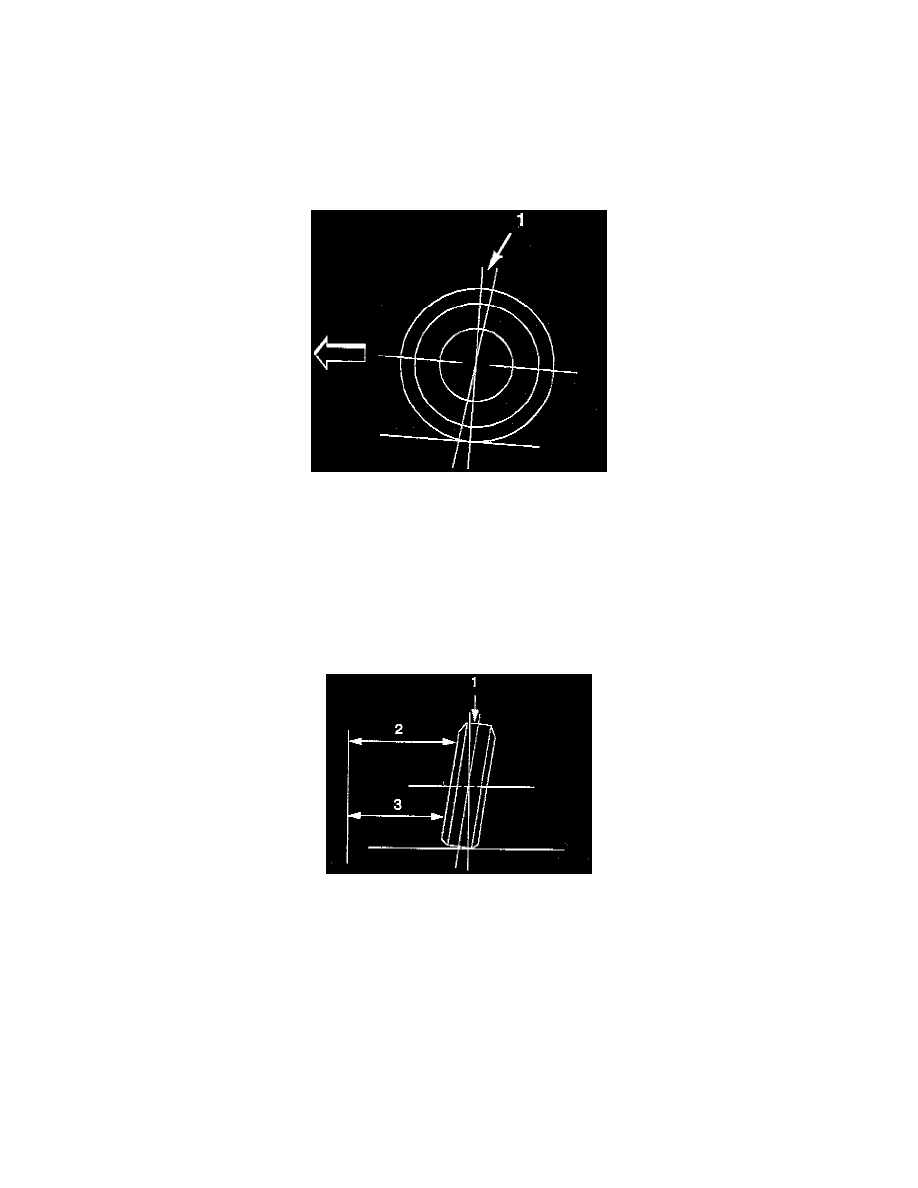Envoy 4WD V6-4.3L VIN W (1998)

Alignment: Description and Operation
Front wheel alignment refers to the angular relationship between the suspension attaching parts, the wheels, and the ground. Proper alignment is
considered essential for efficient steering, good directional stability, and to prevent abnormal tire wear. The most important factors of front wheel
alignment are caster, camber, and toe-in.
The trim height is used to determine the correct relationship of the suspension to the chassis. Check the trim heights when you diagnose steering or
vibration complaints.
CASTER
Caster is the tilting of the front steering axis either forward or rearward from the (1) vertical. Caster is measured in degrees. A rearward tilt is positive
and a forward tilt is negative.
On the short and long arm type of suspension, you can only see the caster angle with a special instrument. If you look straight down from the top of the
upper control arm to the ground, the ball joints do not line up fore and aft when a caster angle does not equal 0 degrees. With a positive angle, the
lower ball joint would be slightly ahead (toward the front of the vehicle) of the upper ball joint center line.
Incorrect caster results from damage to control arms and to other related front suspension parts.
CAMBER
Camber is the inward or outward tilting of the front wheel from the vertical. When the wheels tilt outward at the top, the camber is positive. When the
wheels tilt inward at the top, the camber is negative. The amount of tilt from the vertical is the (1) camber angle. Camber is measured in degrees.
Extreme or unequal camber results in improper steering and excessive tire wear. Negative camber causes wear on the inboard side of the tire. Positive
camber causes wear to the outboard side of the tire.
TOE-IN
